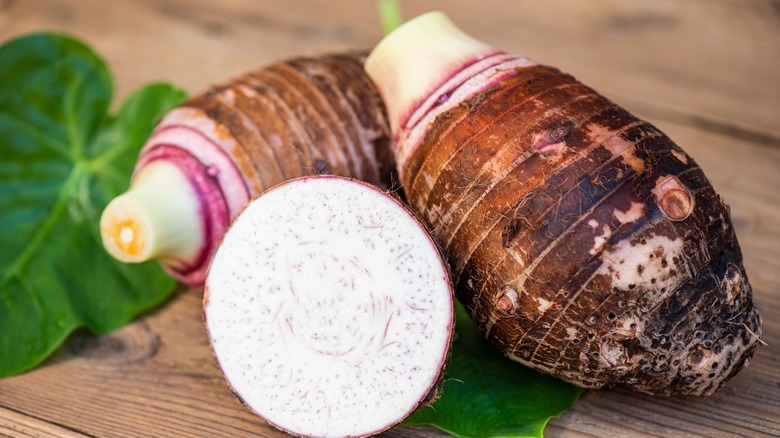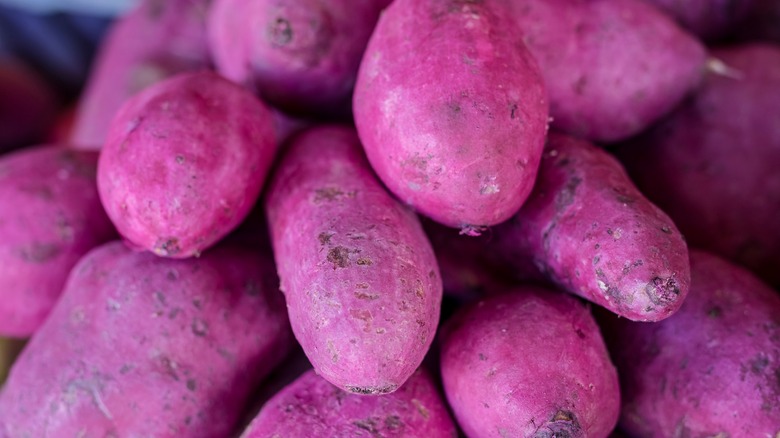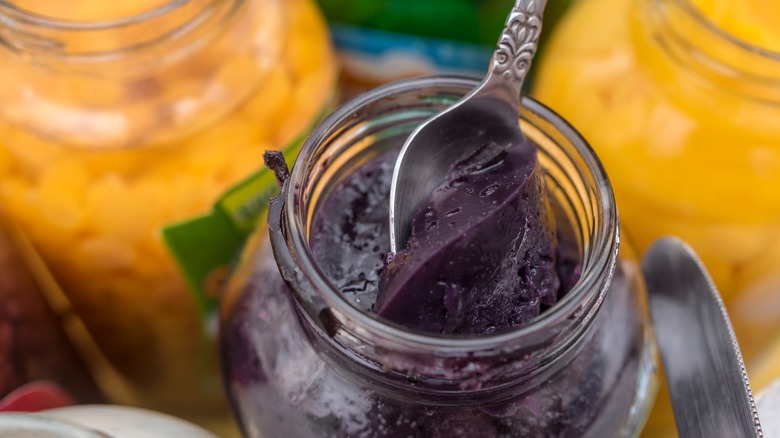Here's How To Stop Getting Ube And Taro Mixed Up
You may have seen desserts made of ube even if you've never tried it. This purple yam (pronounced "ooo-bay") is native to the Philippines but has been gaining global popularity thanks to its vibrant hue and nutty, coconut flavor that works well in sweet dishes. Some of this surge can be attributed to the Filipino diaspora who coped with the lockdowns in 2020 by making ube-based food from their childhood and documenting it on social media. Fast forward a few years and it is now Forbes' "uber ingredient of 2023", which goes to show that it also makes for good puns.
Though similar, ube should not be confused with taro (above), which is another starchy root vegetable often found in tropical and subtropical countries. The obvious differentiator is the color. Taro has light brown skin and white flesh compared to ube's purple-colored skin and flesh thanks to the antioxidants called anthocyanins.
But there are other ways to differentiate the two tubers — namely the origin, texture, taste, and application.
Ube is contained to the Philippines, while taro is ubiquitous
Ube (above) is fairly contained to the Philippines, while taro originated in South East Asia but has since spread to other tropical and subtropical regions where it takes on different names and uses. Taro is often compared to a cross between a potato and a sweet potato and is called "poi" in Hawaii — where it is a staple food — and "cocoyam" in West Africa, where it is a key ingredient in fufu.
This might explain why people are more intrigued by ube — only people who are familiar with Filipino food are likely to know it. There are now festivals dedicated to ube and rankings for ube-flavored food, while there is nothing like that for taro because it has always been more ubiquitous.
While taro might be a dependable, everyday staple, it requires careful handling. If you chew or eat any part of the taro plant raw, it can cause skin and mouth irritation, Queensland Government reports.
Use ube in desserts and taro in savory food
In terms of culinary uses, ube and taro have very distinct applications. Ube has a soft, smooth, creamy texture when cooked and is typically used in desserts, while taro is more fibrous, grainy, and commonly used in savory dishes.
A popular Filipino food that uses ube is ube halaya, which is a type of jam. The ube is cooked, mashed, and then cooked again with coconut milk and sugar to make a creamy spread with pudding-like consistency that can be used in cakes, halo-halo, and ice cream. While there are numerous traditional Filipino recipes featuring ube, people have also been experimenting and incorporating ube in everything from ube donuts to ube bread.
It is not always easy to find fresh ube in grocery stores, so there are alternatives such as ube powder, which needs to be rehydrated before it can be used.
In comparison, taro is commonly used in savory dishes such as soups, stews, and stir-fries. For example, in India, taro (or "arbi," as it is known locally) is sauteed with spices and eaten with rice or parathas. In this sense, taro is as versatile as potatoes or sweet potatoes. You can mash, boil, steam, or fry it and top with herbs, spices, or condiments. There are no obvious rules except never eating any part of it raw.


